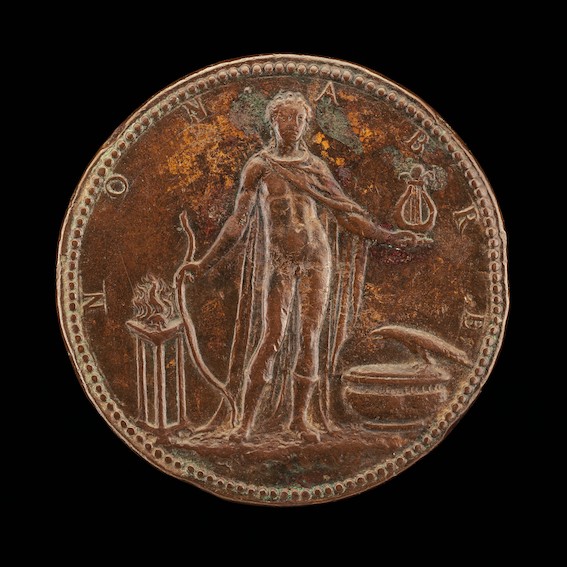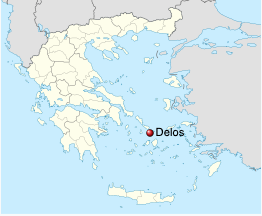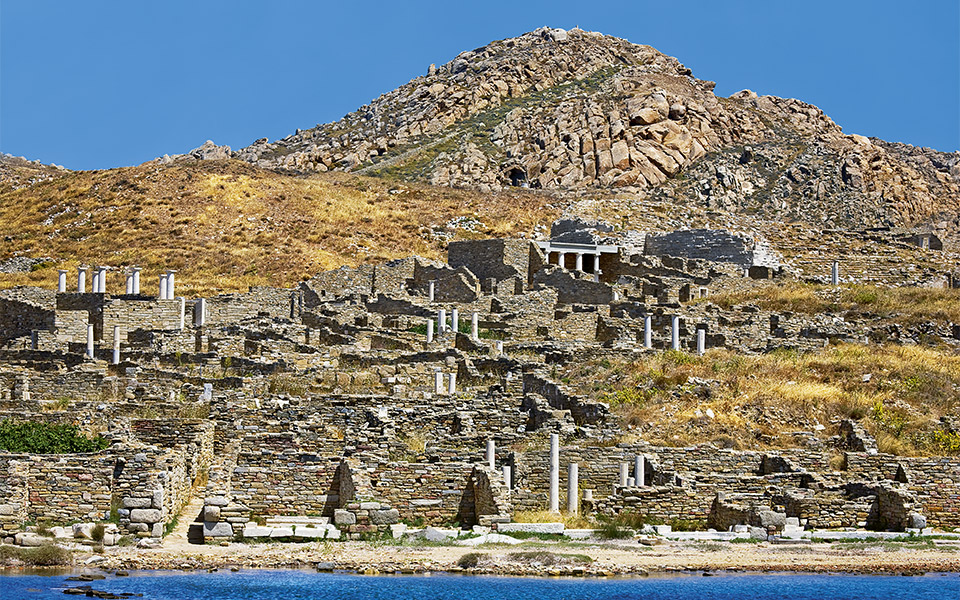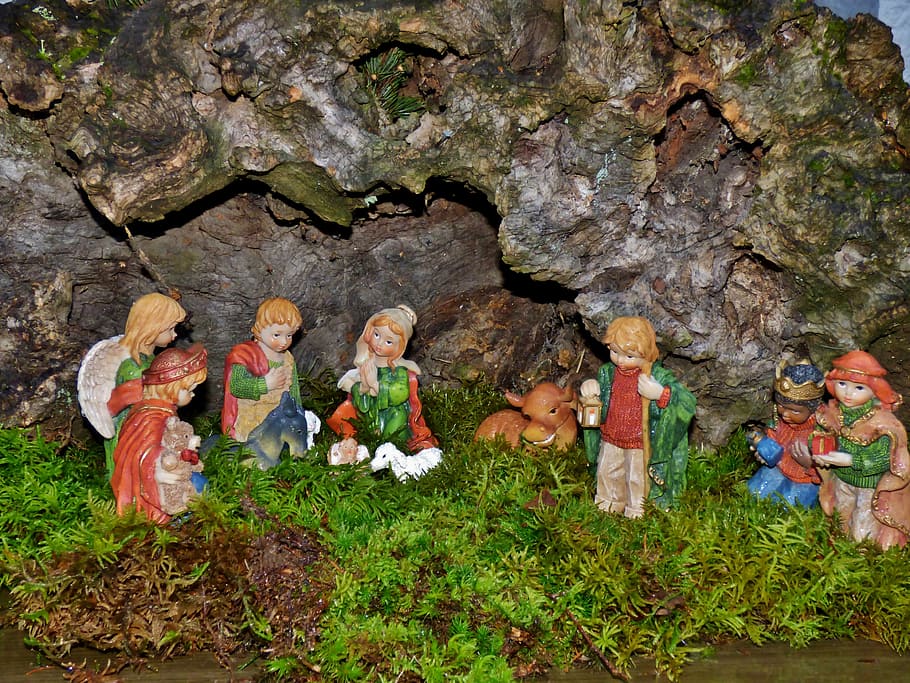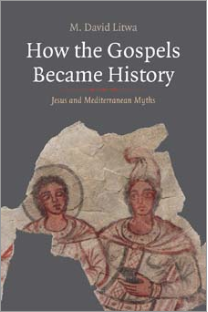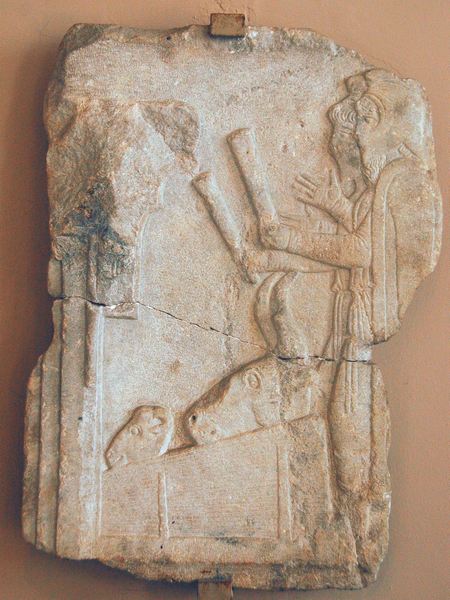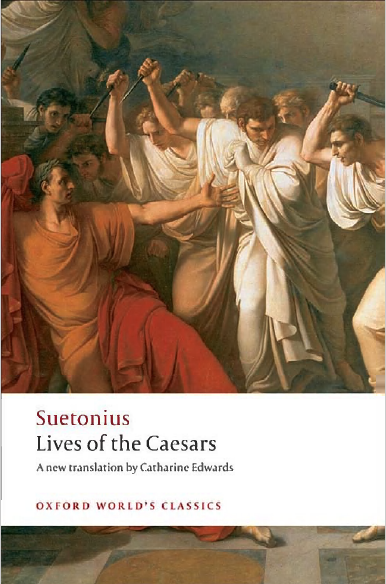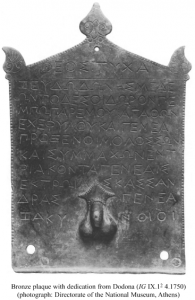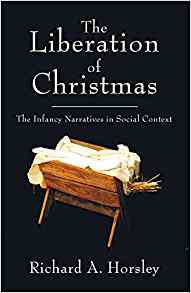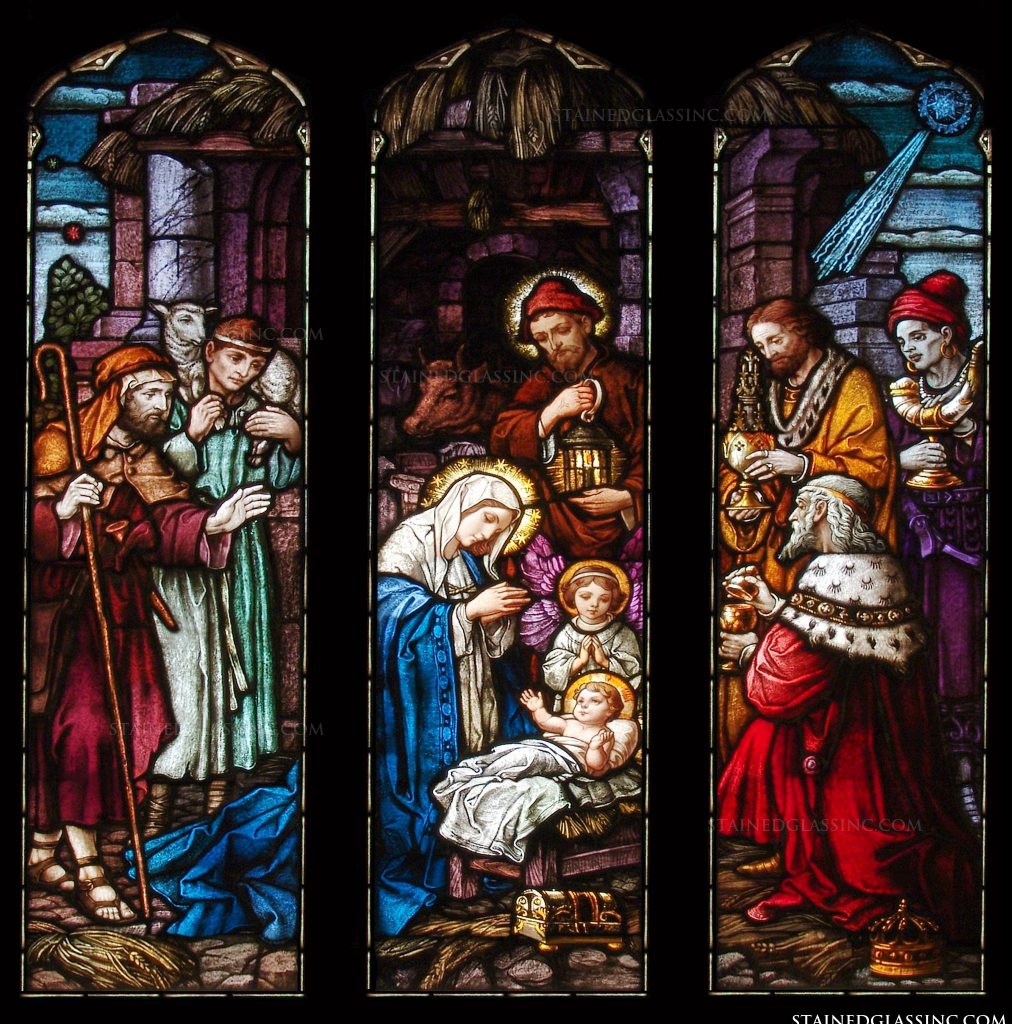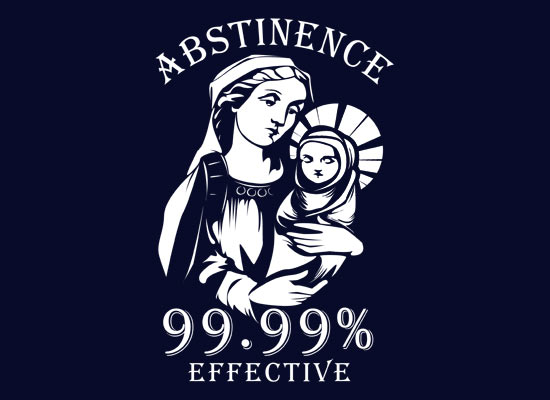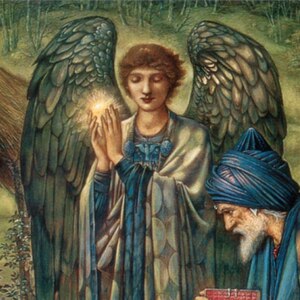Critique of the Gospel History of the Synoptics
by Bruno Bauer
Volume 1
—o0o—
1
First section.
The birth and childhood of Jesus.
§ 1.
The lineage of Jesus from David.
After the recent founders of biblical criticism unsuccessfully attempted to answer the question of why Mark says nothing about the birth and childhood of Jesus, and nothing even about his Davidic lineage, by assuming that the reason for this “omission” can be found in the subjective purpose of the evangelist and in the desires of his readers*, we can now, based on the latest advancements in criticism, dare to express the objective reason for that supposed omission at the beginning of our treatise.
*) Saunier, on the sources of the Gospel of Mark. 1825. p. 32–36.
One considered the fact that Mark says nothing about the birth of Jesus an “omission” because either, from the older orthodox standpoint, what the other two Synoptics relate about the birth and childhood of Jesus was considered historical and generally known, thus something that the second Synoptic could not have overlooked; or because one assumed that Mark had before him the writings of Luke and Matthew, from which he drew his own Gospel, and thus could only have omitted the Gospel of the childhood of the Redeemer for particular reasons. However, if he omitted it because it was well-known, he should not have written anything at all; for if the wondrous birth of the Lord with all its circumstances and its immediate consequences was so well-known to the Church at the time when Mark wrote that it did not need to be mentioned, then the public ministry of Jesus would have been equally well-known, and the same reason that made the representation of the prehistory, which had to be unknown by its very nature, superfluous, would have made the report of the public activities of Jesus appear as an unnecessary work. The assumption that only for Jewish readers could the genealogy and the account of the wondrous birth of Jesus have had significance, but for Gentile Christians, the same thing that had a high value for Jews would have been even more offensive – this assumption is contradicted by the fact that, in this case, a writer who knew his readers and wanted to tailor his work to their tastes would have been very wrong to be reserved and sparing. According to their earlier view, in which they were accustomed to genealogies of their gods and heroes, as well as to accounts of the wondrous birth of great men, Gentile writings, on the contrary, would have been very interested in learning about the genealogy of the Savior and the greatest wonders that accompanied his conception, birth, and early childhood would not have been anything surprising to them. That even the spirit of the Hellenistic Judaism brought forth the idea of the wondrous conception of the Messiah, which lay hidden in Judaism, and that only in the idea of the God-begotten did Hellenism and Judaism reconcile themselves and find a balance between their opposing religious principles, we will not even mention here. In the end, in desperation, one finally says that Mark “only wanted to portray the public life of Jesus”, i.e. one forgets that it was precisely the question of why he gave his work this limited scope that was under consideration, and one proves that under the usual assumptions the question is unanswerable and then resorts to that presumption of despair which thinks that the question “why?” is best answered by saying “because that’s just the way it is”.
3
Against this presumption, as stated, the profound investigations that the recent past has given us the right to reverse the situation from the outset, namely to restore it to its correct position. Mark did not abbreviate the presentation of the gospel history in the sense that he did not include an essential part of it that lived in the community’s memory, nor did he leave out anything in the sense that he only partially used the writings of his predecessors. He could not omit anything from the Gospels of Luke and Matthew because he did not know them, because they did not exist before the time he attempted to present the gospel history, and he could only report nothing about Jesus’ Davidic descent and miraculous birth because the community knew nothing about it or – to put it more cautiously – because the beliefs of this view were not yet fully developed in the community’s consciousness, and they had not yet received that creative impulse that would enable them to develop into an artistic and literary image that we only find in the writings of the other two synoptics.
We could assert this, but we do not want to; we will prove it. By starting with the genealogies, we will demonstrate that, according to the design of his writing, Mark did not conceive of Jesus’ Davidic descent in the sense that his two successors did, and that he could not have done so yet, and we will complete the proof by showing how the genealogical accounts of the first and third gospels arose.
Anyone who claims that a writer has given an abbreviated version of another’s work and that he has taken a part of its organism, thus not only shortening it but also omitting it, is obliged to prove that the shorter writing suffers from a recognizable deficiency. For if what has been omitted is an essential part of the original whole – and we shall not consider the news of Jesus’ Davidic descent to be unimportant – it will not have stood atomistically on its own but will have served its first position in explaining the whole, and some details will be incomprehensible if what explains and motivates them has been left out. A deficiency of this kind is not in the slightest caused by the absence of the genealogy in the writing of Mark. For while in Matthew’s gospel Jesus is called the Son of David so often that it is unmistakable how the Evangelist is dominated by the view of his Davidic descent *) and the writer, in the beginning of his work (Matthew 1), designates the Lord as the Son of David not without reason, Mark only once, namely, when the blind man in Jericho calls the Lord the Son of David (Mark 10:47). If one were to insist that Mark had provided an extract from Matthew’s writing, one would have to say that he had worked very meticulously, namely by so changing all the passages that presuppose the genealogy that the omitted presupposition is no longer missed.
*) Matthew 9:27, 12:23, 13:22, 20:31, 21:9.
4
However, the matter is not only that the supposed omission in Mark’s writing is carried out so consistently that all the contradictions that could possibly, indeed very easily, have been caused by it are avoided, but this deficiency immediately turns into an extraordinary advantage, and the first gospel now falls into an irreconcilable contradiction.
In both cases when Jesus is called Son of David in the first gospel (9:27, 20:31), and also when he is called Son of David by the Canaanite woman (15:22), the circumstance proves that the evangelist, in this exclamation, wants to recognize the Lord not only in the empirical-genealogical sense as Son of David but also as the Messiah, in the expectation of a wonderful healing. Similarly, the crowd, having just witnessed a remarkable miracle, speculated that Jesus might be the Son of David, namely the Messiah (Matthew 12:23). And so, to leave no doubt about the evangelist’s view, the crowd, when it solemnly accompanies the expected Messiah to the capital, must finally shout “Hosanna to the Son of David” (21:9). Yet when Jesus asked his disciples shortly before leaving Galilee what the people thought of him, they had nothing to say about some who believed him to be the Son of David, the Messiah (Matthew 16:14).
5
Mark has kept himself free from this contradiction. Even according to his account, the disciples, when the Lord asked them about the people’s opinion at the end of his career (8:28), did not know of any popular party *) that recognized him as the Messiah. But, according to his account, it is also true that Jesus was never before seen by the people as the Messiah or Son of David. Would one dare to claim that Mark, when he used the first gospel, happened to achieve or, through sensible reflection, managed to avoid falling into that contradiction? Or is it not rather undeniable that the first evangelist has inserted foreign elements into a work whose structure was entirely different, whose focal point (Matth. 16:14) he left intact and which acknowledged Jesus as the Messiah only gradually and, indeed, only shortly before the time of suffering in the inner circle of his disciples? That he has also placed the later emerging conception of Jesus as the Son of David in the foreground throughout his report, thus causing that confusion?
*) As for the demonic beings who “know” Jesus as the Son of God (Mark 1:24, 34, 3:11), but whom no one would call a popular party, we will discuss their significance later.
6
One could indeed call this a contradiction, that in the second Gospel, after the disciples had just acknowledged that no one in the crowd believed their master to be the Messiah, Jesus is suddenly called the Son of David by the blind man in Jericho on the way to Jerusalem and by the people who greet him upon his entry into Jerusalem. However, this contradiction – and it really is one – is not caused by something preceding that statement of the disciples, but follows it, and with what was previously reported about Jesus’ position in the crowd, this statement remains in harmony. How can it be reconciled that Jesus, as long as he was in Galilee, was never recognized as the Messiah and now, upon his entry into the capital city, the people greet him as the Promised One? This question will only occupy us later; for now, we are content with the insight that the repeated recognition of Jesus as the Messiah and Son of David during his stay in Galilee in the report of Matthew is a later addition to an older, completely different type, that this type is preserved purely in the work of Mark, and we add only the observation that in the latter work, the blind man from Jericho with his faithful call is advanced by the writer’s pragmatism as a precursor to the enthusiastic crowd that receives the Lord in Jerusalem. Finally, the Lord should be received by a faithful crowd: thus it was fitting that a precursor of the ripening faith should meet him beforehand.
The only time where Mark knows of the faithful greeting of Jesus as the Son of David, he does not consider that Jesus might be the Son of David in any other sense than being the Messiah and bearer of the grace promised to David. The blind man sitting by the road in Jericho hears that Jesus of Nazareth (Mark 10:47) is passing by with the escort of the crowd and immediately calls on him for help as the Son of David. But is it so self-evident that a man who makes the impression of the Messiah and is otherwise only known to be from Nazareth could be a son of David in the genealogical sense? Could a writer who has reported nothing in this regard except that Nazareth is Jesus’ hometown want to be understood that the only time he includes that greeting, especially when he introduces Jesus as a Nazarene in the same breath, one should think of a bodily descent of Jesus from David? No! For in this case, he would at least do it like Matthew and only say that the blind man heard “Jesus” coming down the road (Matthew 20:30). Furthermore, if Mark knew of a Davidic descent of Jesus, he would certainly not let the people in Jerusalem refer to David as their common father (Mark 11:10) upon Jesus’ entry, he would not let the people greet the Kingdom of his father David, which had now appeared in the one who comes in the name of the Lord. He would thus not only bring Jesus into connection with David in the way that the kingdom of the king, who in the spiritual sense is the father of the whole people, would come in him. He would do it again as Matthew did, who lets Jesus enter Jerusalem as the Son of David.
7
Mark has explicitly excluded any idea of a physical descent of Jesus from David. The question of how the scribes say that Christ is the son of David, and the proof that this assumption is burdened with an insoluble difficulty (Mark 12:35), may have been raised by Jesus himself or formed later, but that makes no difference. In any case, the question and answer emerged from a context in which the demand that the Messiah must be the son of David and the fact that no one knew anything about Jesus that led to the assumption of such a descent faced each other and that demand in its strict interpretation should be rejected as unfounded. If Jesus raised the question, he was not a physical descendant of David; if it was formed later, no one at the time thought that Jesus could be the son of David in a physical sense. One must not understand the nature of religious consciousness badly and assume that the community enjoyed the difficulty that their belief in Jesus’ Davidic descent faced. The religious consciousness does not like to search for contradictions that it itself carries with it and deliberately present them in their harshness; it rather seeks to mediate them in some way, whether successful or not.
8
Matthew has preserved that question of Jesus in his scripture, but in contradiction to his other predictions. According to him, it should be missing, while its true context is only found in the scripture of Mark. When Matthew took up the question, he was determined by a type to which the genealogy of Jesus that he added and the assumption of Jesus’ Davidic descent were entirely foreign.
Now, if it has become serious in Matthew’s scripture with the assumption of Jesus’ Davidic lineage — and that must be called serious when Jesus is introduced at the beginning of this scripture as the son of David and Abraham and the correctness of this naming is proven by a genealogy — then Matthew falls into a new contradiction, a fate that he shares with Luke. Like Luke, he shares a family register that proves Jesus as the son of David, he also leads the line that connects Jesus with David through Joseph, and both report that Joseph was by no means the father of the Messiah, that Mary rather received the mystery of the divine child in a supernatural way. However, both evangelists also had the consciousness as soon as they came to the critical point that they combined conflicting elements and now try to eliminate the contradiction as far as possible, or rather to obscure it, as they both still want to maintain both hostile elements. They are certainly dominated by both elements, but at the same time not in the same way, and it is easy to indicate which of the two has the upper hand in their consciousness over the other: it is the one that develops freely for itself, which tolerates no disturbing intervention by the other in its representation, which, on the contrary, as soon as it comes into contact with the other, restricts it or — for us who take the study seriously and are no longer satisfied with Docetism — destroys it. So Matthew says (1:16) when he wants to move from Joseph to Jesus in the family register, no longer, as he expressed until then when moving from father to son, that Joseph “begat” Jesus and as the father of the promised one connects him with the house of David, but he only calls him the husband of Mary, from whom Jesus, who is called Christ, was born. In Luke, the contradiction becomes even more glaring when the genealogy begins with the words: Jesus “was,” “as he was supposed,” the son of Joseph (Luk. 3:23). That he really was and that he was only considered so according to a false popular opinion, both stand here side by side, i.e. one determination nullifies the other. Originally, however, no one in the Christian community could attach any value to a genealogy, if it already existed, or put one together to prove Jesus’ Davidic descent. No one could even remotely think of leading the lineage that connected the anointed one with David through Joseph, unless it was the general conviction that he was Jesus’ real father. Originally, therefore, the genealogy must have been designed to legitimize Jesus, the real son of Joseph, as a Davidic descendant, and only a later interest, which arose with the view of the supernatural generation of the Messiah, could change the design of the genealogy.
10
There are still ruthless heroes who dare to attribute to Luke the intention of giving the genealogy of Mary, according to the investigations of modern criticism*. Against the attacks of the apologists, Matthew seemed too secure, as he introduces the transition to Joseph with the words “Jacob fathered Joseph,” thus introducing Joseph as a true son, not just as the son-in-law of Jacob, and moreover, although this could escape the apologetics, allowing the angel of the Lord in the first dream in which he appeared to Joseph to address him as the son of David. It was already unfair if the apologetics thought that Luke introduced Joseph less directly into the genealogical register, but a gospel like the third that explicitly says only of Joseph that he was of the house and lineage of David (Luke 2:4), which says nothing more of Mary than that she was a relative of the priestly woman Elizabeth (c. 1, 36.), thus leaving the impression that she belonged to the lineage of Aaron**), a gospel that is so suspicious of appearance as if it wanted to insert the Messiah into a family in which the kingly and priestly lineages had united – such a gospel could not have the slightest intention of giving the genealogy of Mary if it traces the lineage of Jesus through Joseph to David.
*) For example, Lange, on the historical character of the canonical Gospels, 1836, p. 56. We will see the nature of this type of heresy develop further.
**) Elizabeth is “of the daughters of Aaron,” according to Luke 1:5. One must be very surprised if Neander (L. J. Ch. p. 17 [p. 19 in translation]) cites this fact to avoid the dangerous consequences of that note, such as the relationship of the two women, and holds it possible that Elizabeth too could have been descended from the tribe of Judah!”
It is certain, therefore, that after the time when Mark wrote, the ideal view borrowed from the prophets and transferred to Jesus that the Messiah was the son of David, was transformed in thought also into the actual empirical descent of Jesus from David and gained so much power in the Christian community that it still asserted itself in its transformation into a historical note when the origin of the personality of Jesus was explained quite differently. The form of the view we find in Mark only linked to the Old Testament promises in an ideal way to present the inner connection of the Appeared with the earlier revelation of the divine plan, but gradually the thought also made its way into the empirical expansion of history and now tried to build a bridge in this history that connected the present of salvation with the past*).
*) If one asks whether a conception that was generally widespread among the Jews played a role in this process, one should not look for the answer in Bertholdt’s Christology or similar books that claim to teach us so precisely about the Messianic dogma of the Jews at the time of Jesus. This phantom of uncritical scholarship, which has long frightened and misled both wise and foolish, is nothing more than a phantom. Doesn’t it say in the Bible that Jesus asked (Mark 12:35), “How can the scribes say that the Christ is the son of David?” Is there not proof in this question that the opinion did indeed prevail among the Jewish scribes that the Messiah must be physically descended from David? Not at all! The question: πως λεγουσιν οι γραμματεις [=what do the scribes say?] is a product of pragmatism, just like the question of the disciples in Mark 9:11, “Why do the scribes say that Elijah must come first?” (ὅτι λεγουσιν οι γραμματεις). Jesus was the first to make the observation that Elijah, of whom the prophet speaks, had already appeared in John the Baptist, and the question of the disciples was only asked to introduce this explanation by Jesus. Just as the scribes are only put on the pedestal of messianic dogmatics by the pragmatism of the historian, they also owe their teaching position in Mark 12:35 to the same. Although it could be argued that if one were asked “How do the scribes say that the Christ is the son of David?” the matter would be quite different, because the polemic against the demand that Jesus, as the Messiah, had to be the son of David, can only make sense and could only arise if it was indeed a Jewish view that the Messiah had to be descended from David. Jesus or the community, depending on how the origin of that question is explained, must have really struggled with a difficulty that arose from the conflict between his non-Davidic descent and the Jewish demand that the Messiah must be a descendant of David. However, the early historical existence of this Jewish demand is not as necessary as it seems. The literal agreement of Jesus’ question and the disciples’: “how do the scribes say,” the certainty that the question of the disciples regarding the teaching of the scribes about the coming of Elijah belongs purely and solely to the pragmatism of the writer, also makes Jesus’ question about the scribes’ idea of the Davidic lineage of the Messiah strongly suspicious of being of later origin. But at least the struggle and polemic against the demand that the Messiah must descend from David remains. Where is this demand at home, when was it established? We may now say: not during Jesus’ lifetime. Even Mark himself knows nothing about the people demanding that the Messiah must be a descendant of David. Jesus is not greeted as the Son of David at his entry into Jerusalem, but how could Mark have downplayed this idea so much in his writing if it had already disappeared by the time he wrote his Gospel? A glance at the Gospel of Matthew teaches us rather how this idea, once it had arisen, became important even for a writer with completely different presuppositions. Mark therefore wrote at a time when the ideal vision of the prophets from the branch of David onto Jesus was first transferred and indeed as an ideal. This vision of the prophets was only now woven into the image of the Messiah: how could Jesus fight against an idea that had not even received meaning in its ideal germ at his time, let alone become a positive dogma? But who now formulated the demand whose illegitimacy the Lord demonstrates in the Gospel of Mark? None other than Mark himself. He still had the consciousness of the ideal meaning of the combination, which he had perhaps achieved independently, without knowing that it had already been made by others, and he now uses a psalm passage that was already generally regarded as a prophecy of the Messiah to prove that the designation of Jesus as the Son of David should only be understood as ideal.
12
The seriousness had become mercilessly strict when Luke and Matthew wrote their writings. The husband of Mary – Mark does not yet know that his name is Joseph – has become a son of David and as such inherits the same title for his son who was to elevate him to that high significance that he has in the prophecies of the Old Testament. Luke and Matthew cannot do otherwise: they must convey the genealogies, they must, although they must fundamentally change their position with regard to Jesus, still stay with them and lead the genealogy through Joseph. Finally, they must draw the ultimate consequence and let Jesus be born in Bethlehem, so that all attributes of the promised Davidic can be fulfilled in him. Luke, who thus proves himself to be the earlier, must still use the Davidic descent of Joseph and place a later census in an earlier time. He must therefore use the strongest means to lead Joseph and his pregnant wife to Bethlehem and to have the Davidic born in the cradle of his lineage. He has saved his successor Matthew a lot of trouble and made it possible for him to assume Bethlehem as Jesus’ birthplace (2:1) without further ado and to prove the necessity that the Messiah had to be born in this place only from the prophecy of Micah. What contradictions! Luke and Matthew are not only captivated by the idea of Jesus’ Davidic descent, but they also work it out further by drawing the prophetic geography into it at the same time as they report the birth of the divine begotten, who should have been infinitely beyond the ceremonial of the Jewish household through his infinite worth. They prove that the genealogical work had long been done in the community before them and the result of it had become almighty. The two synoptics were trapped and the only help that remained for them was to slightly bend the genealogies where they passed from Joseph to Jesus or to reduce them to a mere illusion, as Luke did. But how could they still, although the Davidic descent of Jesus had become something purely dogmatic in essence, connect this view with the opposite view of Jesus’ divine generation in their consciousness? It is better to ask the church how it could accept the Davidic descent of its founder for eighteen centuries and thus tolerate the same contradiction into which Luke and Matthew had already fallen for such a long time. The answer lies in the power of the positive and the habit that arises from it. The acceptance of Jesus’ Davidic descent was given to Luke and Matthew, it was even genealogically proven, it remained because of its positive nature, even after the nerve of the proof was cut, it remained because in it the idea of a connection of the Christian community with its historical presuppositions was contained. It also remained in the church because the representative mind does not know how to recognize the presuppositions of its principle in the whole realm of the spirit of history, but must adhere to the leash of a genealogical line. It remained with its contradiction and spurred the spirits for eighteen centuries to unhappy attempts at solutions until criticism came to explain the emergence of the contradiction through an insight into the letter and the nature of religious consciousness, thus to solve it and to deserve the accusation of irreligious blasphemy as thanks.
14
Despite the prospect of being paid with ingratitude, let us bring the question to a close and turn to the investigation of who is responsible for the genealogies. Were they perhaps composed by Luke and Matthew themselves? Luke did not compile the one he provided, he found it. The reason? A historian who builds a part of his narrative purely from his own perspective will undoubtedly be able to give the clearest account of the purpose of this product, he will know where it belongs, namely in the context from which it has emerged with irresistible necessity, in short, he will not force it into an environment whose coherence he thereby destroys most violently. Luke is already beyond the part of his historical work where a genealogy would have its place, he has already depicted the public ministry of John the Baptist, and he finally describes the baptism of Jesus with its miracle, and here, when he notes that Jesus was about thirty years old at his appearance and “supposedly” the son of Joseph, he inserts the genealogy with a participle and tears the following account of the temptation out of the internal coherence that connects it with the account of the baptism. Luke has not yet been able to overcome the genealogy and properly incorporate it into his work: he found it and the view that originally underlay it, as Matthäus did in his work, so far as it has a parallel with the Gospel of Mark, has not yet been fully processed. He just like Mark only lets the blind man of Jericho greet Jesus as the son of David and even retains the remark from Mark (Luk. 18:37.) that the blind man heard that Jesus of Nazareth was coming down the road.
15
The conclusion that the genealogy found by Luke is truly an authentic relic of Jewish antiquity would be premature. If Luke did not compose it, could someone else have put it together before him? Once one engages in talk of historical credibility in this case, one would have to prove beforehand – which is impossible – that the family tree of a collateral branch of the Davidic House was maintained for a thousand years under all the storms of history and then one would not have to fear comparison with the family tree provided by Matthew. Luke, like Matthew, gives the family tree of Joseph, both want to be right, only one can be right, but if one is not accepted as a credible witness, where does the other get his privilege from? If one falls – and one at least must fall – then the other also falls. But one only needs to look at Luke’s genealogy a little more closely than usual to see how anxiously and meagerly the names are thrown together, which is usually the case with such an intended work. How often does the name Matthat and Mattathias appear? How suspicious it is when the table (Luk. 3:25.) lists Amos, Nahum, and how one must wonder that not even some of the prophets come, especially when one sees how the names of four sons of Jacob follow one another in vs. 29, 30.
16
There are tortured hypotheses that try to explain why Luke and Matthew, although the former traces the line of David through a collateral line and the latter through the royal line, still roughly coincide in the mention of Zerubbabel and Salathiel in their respective genealogies. We no longer need these hypotheses, even if they were less strained, because it is so clear that the genealogy in Luke is a free creation, and it can be easily shown where Zerubbabel and Salathiel suddenly appear. The unknown land through which the thousand-year train of such strange and meaningless names passes would have been too barren and desert-like, and the reader who was to accompany that train would have had too little orientation or rest if there had not been a signpost or oasis. Names with historical resonance had to appear at the right time, so that the reader would learn that he had now advanced to the time of the Babylonian exile. This necessity for a pointer, a resting point was indeed so urgent, the author was so unconditionally compelled to obey, that he did not think of the difficulty of how Salathiel could be made a father and Zerubbabel a son, both of whom were completely unknown.
Matthew handles the matter more skillfully – we will come to know him as a thoughtful, often ingenious composer – but he also had the advantage of being accustomed to seeing the genealogy as a component of the gospel through the writing of Luke. He places the genealogy where it belongs – at the beginning of his work. But which genealogy? One that was handed down to him? Or one that he created himself? In many respects, the spirit and the thoughtful reflection of the first synoptist cannot be denied.
17
The genealogy has been reduced from its formless extension, in which it was traced back to God the Father of Adam by Luke, and brought back to narrower limits, namely, only traced back to Abraham, fitting the viewpoint of Matthew, who, with particular preference, relates the old covenant to the new, so that his genealogical interest will not extend beyond the patriarch and father of the covenant people. In the introduction to the genealogy, Jesus the Anointed is immediately referred to as the son of David and Abraham, indicating that the promises made to Abraham and David, and tied to their descendants, have found their bearer. Only a writer who always shows a thoughtful engagement with the Old Testament will mention the women in the genealogy, who seemed to have something outstanding: Tamar gave herself up out of zeal for the preservation of the holy family, Rahab was the first of the Canaanite people who acknowledged Jehovah during the entry of the Hebrews into Canaan *), as Ruth became the mother of the Davidic line through a special book of the Old Testament, and Bathsheba finally enabled the family that was to count the Messiah among its members to ascend to the throne by opposing Adonia’s claims. It is certainly only the evangelist’s observation that the genealogy is divided into three equal sections (Matth. 1:17.), each bounded by the most important epoch-making people and events of history. Each of the three sections counts fourteen members, the first extending from Abraham to David – who, as the son of Jesse, is still drawn into the first period. David, as Solomon’s father, begins the second section, and Josiah closes it as the fourteenth, but not as a son, as David closed the first series, but as the begotten one, as Josiah’s son is not counted in the second series, but as the father of Salathiel, he begins the third period, and from him on until Jesus there are again fourteen members. The transition from the second series to the third is thus made by the author differently than from the first to the second series, but he had to do it in order to obtain three times the same number of members, and he could do it without difficulty by setting the time of the exile to Babylon as the intermediate link for the second and third series. In this intermediate interval, he could let Josiah close the second series as the father of Jechoniah without counting the son, and set Jechoniah as the father of Salathiel at the head of the third series *). Now that so much, indeed all that is essential and the tendency, is set by the author’s reflection, should we not dare to address the fact that the whole genealogy is the writer’s work? He, the evangelist, considered it more appropriate for the Messiah to be a member of the ruling line of the Davidic house. He had discovered that there were fourteen members from Abraham to David**), drawn to this doubling of the number seven, which he found meaningful, and inwardly preoccupied, he went through the series of the kings of Judah in memory, and an error of his memory made it possible for him to find only fourteen members again from David to the last significant king, Josiah. But once the same rhythm had been found twice, it was self-evident that the chosen and divinely guided lineage in the final period up to the Messiah also had exactly fourteen members, and the names of these were soon written down, with at least so much certainty that the father of a Joseph (verse 16) was named Jacob. Jacob, indeed. Yes, it is so: the author did not even think about the note in Chronicles about the descendants of Serubabel (1 Chronicles 3), and so the remarkable result arose that Luke and Matthew, each in their own way, gave Serubabel a lineage of descendants of which the Chronicles had no knowledge at all.
*) But when Matthew makes Salmon her husband, he follows, if not his own reflection, at most a Jewish view, of which the OT still knows nothing.
*) Chrysostom at least touched on the right thing when he said δie μετοικεσία tese εν τάξει γενεάς
**) Namely, in the way that the Old Testament and, after it, the genealogy in the third Gospel count the generations. One cannot even say that the Chronicles, when they enumerate the same generations (1 Chronicles 2:4-12), do so with the consciousness that certain generations are skipped. Even in the first mention of this genealogy (Ruth 4:18-22), the manner in which the connection of the individual members is formed on the closest basis, rather proves that the genealogist wanted to give the complete family tree. The authors of these late books believed that they were giving as many generations as the time, for whose length they did not carry out critical investigations, required approximately and for the highest necessity. Therefore, Matthew also believed in good faith to give the complete genealogy for a time that has seen far more than fourteen generations.
19
Matthäus had to assume, as soon as he reflected that there were fourteen generations from Abraham to David, and was close to discovering that there were also fourteen generations to be counted from David to the fall of the monarchy, that the sacred history in its course had an inner, secret rhythm, and that the propagation and history of the chosen family had to occur in a certain order and regularity. Both supported each other: the assumption made the corresponding discovery possible and proved its correctness, just as the discovery confirmed the assumption. Gfrörer thinks *) that the evangelist had in mind “how the people moved from Egypt to Canaan in forty-two camps,” and concluded that “the Logos-Messiah descended from the fatherland of spirits, the highest heaven, in forty-two incarnations to the earth.” However, Matthew knows nothing about a pre-existence of the Messiah as Logos, and since he does not even draw the sum of the three lines of descent, he cannot mean that this is precisely what is remarkable. He only thinks that a specific law regulated the development of the Davidic family and, in fact, so structured it that the goal determined in the divine plan, the birth of the Messiah, predetermined the course of history. In other words, the order and wisdom of history spreading out in a wealth of historical figures and struggles has been condensed into a simple but regularly interrupted line according to the evangelical view.
*) The Sacred Legend II, 8.
20
How innocent is this view compared to the exaggerated sentimentality of modern apologetics, which goes wild over the “miraculous” and “constructional” aspects of the two genealogies and in heated enthusiasm believes that the thread that emerged from the tangle of so many families “to hold on to the link that was destined to continue the line was the hope that the Messiah would be born in the lineage of Abraham and David *).” Now, even if Jesus had truly been of Davidic descent, the thread that led from the past to him could easily have been derived from the success if it went through the ruling line. But if not only the ruling line should have the honor of leading to the Messiah, if a side line should share this glory with it, and if that hope should determine the side thread immediately at the first branching off from the ruling line, how could it choose among so many sons of David?
*) Olshausen, Biblical Commentary, vol. 1, p. 47.
Finally, this view falls into the error of veneration of saints if it can only imagine the incarnation of Christ as a prepared fact by assuming **), “that a holy vein of higher life flowed through the entire series of the Lord’s ancestors.” “The Virgin, it is said in this sense, who was chosen to be the mother of the Messiah, could not suddenly be born into the sinful lineage; she was, although not without sin, the purest of the people of that time, and that she was so was her grace election, her origin from the holiest family of mankind.” Of course, the apologist who discovers this “holy vein” in history must stick to the innocent names in Luke’s genealogy and force him, against his will, to include the pedigree of Mary. But we already know what these names have to do with, and we only need to drive the apologetic trick of denying the assumptions of Christian self-awareness in all of history and limiting it to the “holiest family” to its consequences, to the infinite regress, to bring it to an end. The “holiest family of mankind” must also have had its “preparation,” i.e., it too can or must emerge from the holiest family, this, too, and so on, until we finally come to sin, which became the original sin of all mankind. So where is the holy original family here?
**) Ibid., pp. 43-44.
21
The latest apologetics seem to follow Luther’s advice *) and do not want to specify how “the relationship between the two genealogies of Christ to each other may be explained.” However, if they still believe they can claim that “in any case, the descent of Christ from the Davidic line was considered something undisputed from the beginning”‘ *) and we ask with reference to Mark who claimed it, they will remain silent **). Because after a predecessor like Mark, Luke and Matthew, whose authority is precisely at issue, should not be considered as authority?
*) Calvin also says: “If anyone is tempted by excessive curiosity, I prefer the sobriety and modesty of Paul’s admonition to frivolous and futile arguments. The passage in Titus 3:9 is well-known, where we are warned not to argue too anxiously about genealogies.” By the way, Calvin has not been very faithful to his own statement. He rightly opposes the interpretation that takes one of the genealogies to be that of Mary and reduces Matthew’s genealogy to a mere illusion. Consequently, does such behavior belong less to frivolous arguments? Anyone interested in such nibili argutias should see Calvin’s commentary on the fourth Gospel, 1667, p. 22.
*) Neander, The Life of Jesus Christ. 1837. p. 17.
**) If the assertion that something was considered an undisputed truth at a certain time is to be more than a mere assertion, then it requires nothing less than proof that 1) this thing is mentioned in a context where it is clear that a note on something universally unrecognized is being given, and 2) those who had an interest in not recognizing that thing nevertheless mention it in their writings and do not deny it. How can something be presented as undisputed if no one asserted it and thus no one could deny it? The only Paul who could be mentioned here has no intention of giving a historical note when he says (Romans 1:3) that the Son of God was born of the seed of David according to the flesh; he only wants to indicate the connection of this revelation of the Son of God with the past, and he himself indicates where he got the form for the representation of this connection. He got it from the ideal world of the Old Testament view (Romans 15:12).
22
So, violence! If historical evidence is not enough, then apply the power of an a priori proof. One could claim that it was part of Jesus’ upbringing to actually be descended from the house of David because the immediate family feeling, this feeling immediately intertwined with the personality, must have served to provide the natural basis for his messianic self-consciousness. However, history often mocks such limited connections, and the higher a spirit is, the less it is tied to the world it is meant to influence by such a narrowly defined starting point, and the less it needs such a natural connection with the idea of its task. Finally, one could try the extreme and boldly assert that the divine self-consciousness was itself chained to the idea that the beginning of the new community had to come from the Davidic lineage, and this connection between the divine thought and the prophetic idea determined the emergence of the Redeemer from the house of David. However, before we climb to this highest level of transcendence, on which the spirit would have to be beside itself, we note that the establishment of the new community was the abolition of the economy of the Old Testament, that the emergence of the new principle could not happen without negative dialectics against the Old, and that it was not one of the lesser moments of this dialectic when the first self-consciousness of the new principle emerged in a personality born on the extreme fringe of the old world. Let the apologist remember the irony of the dialectical principle which he so often opposes to the demand of worldly and even legalistic pride, when he praises that God has chosen the weak and despised.
——————————
Like this:
Like Loading...

